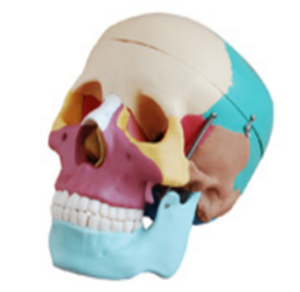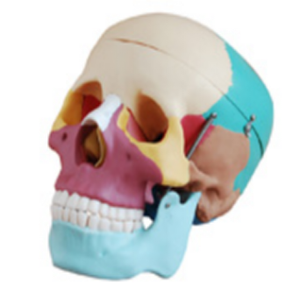In the vast field of medical education, the choice of teaching tools is crucial to the learning effect and interest of students. Colored skull model, as an intuitive and vivid teaching aid, has become a bright spot in medical education in recent years. So why on earth do colored skull models occupy such an important place in medical education?
First of all, with its bright colors and three-dimensional form, it provides students with an intuitive learning experience. Compared with traditional black and white line drawings or two-dimensional plans, it can more vividly show the structure and details of human bones. Students can observe, touch and even disassemble models to gain a deeper understanding of the form, connection and function of bones, thereby deepening their understanding and memory of anatomical knowledge.

Secondly, it has high practicability in medical education. It can not only be used as the main teaching tool of anatomy course, but also can be used in the teaching of pathology, surgery and other related subjects. Through the model, students can more intuitively understand the occurrence, development and treatment process of bone diseases, and improve clinical diagnosis and treatment ability. In addition, the colored skull model can also be used as a prop for medical simulation experiments to help students conduct surgical simulation and skill training to improve practical operation ability.
In addition, it has good popularity and applicability. Both medical students and the general public can learn about the structure and function of human bones by observing and manipulating models. This universal teaching method helps to enhance the public's understanding and awareness of medical knowledge, improve health literacy and self-protection ability.
To sum up, the color skull model plays an important role in medical education because of its intuitiveness, practicality, innovation and popularity. It can not only improve students' learning interest and participation, but also promote the reform and innovation of medical education model. It is believed that in the future medical education, the color skull model will continue to play its unique advantages and contribute to the training of more outstanding medical talents.

